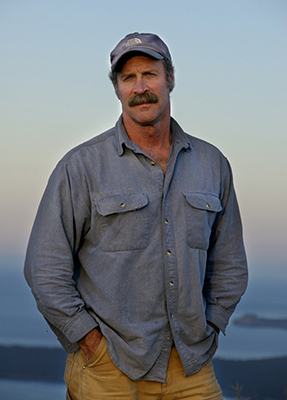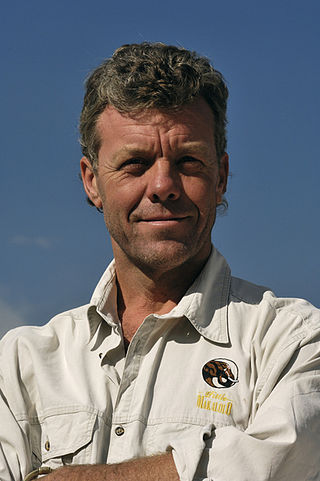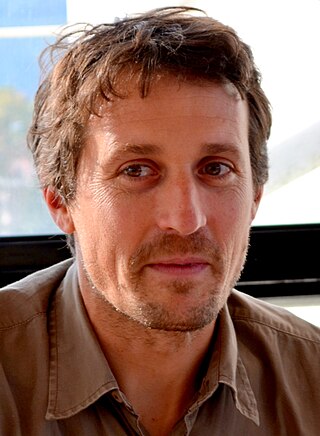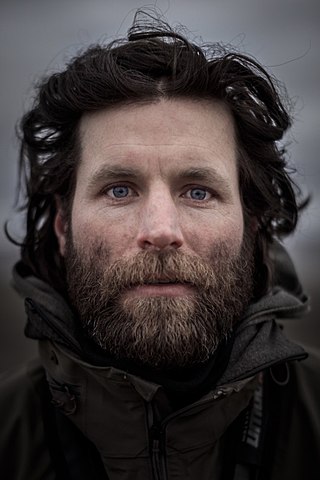
Lucyan David Mech, also known as Dave Mech, is an American biologist specializing in the study of wolves. He is a senior research scientist for the U.S. Geological Survey and an adjunct professor at the University of Minnesota. He has researched wolves since 1958 in locations including northern Minnesota, Isle Royale, Alaska, Yellowstone National Park, Ellesmere Island, and Italy.

Will Steger is a prominent spokesperson for the understanding and preservation of the Arctic and has led some of the most significant feats in the field of dogsled expeditions; such as the first confirmed dogsled journey to the North Pole in 1986, the 1,600-mile south–north traverse of Greenland - the longest unsupported dogsled expedition in history at that time in 1988, the historic 3,471-mile International Trans-Antarctic Expedition - the first dogsled traverse of Antarctica (1989–90), and the International Arctic Project - the first and only dogsled traverse of the Arctic Ocean from Russia to Ellesmere Island in Canada during 1995.
David Doubilęt is an underwater photographer known primarily for his work published in National Geographic magazine, where he is a contributing photographer and has been an author for 70 feature articles since 1971. He was born in New York City and started taking photos underwater at the young age of 12. He started with a Brownie Hawkeye in a rubber anesthesiologist's bag to keep the water out of the camera. He lived with his family in New York City and spent summers in Elberon New Jersey exploring the Atlantic. He later worked as a diver and photographer for the Sandy Hook Marine Laboratories in New Jersey and spent much of his youth in the Caribbean as a teenage dive instructor in the Bahamas where he found his motivation to capture the beauty of the sea and everything in it. His wife is the photographer Jennifer Hayes.

Art Wolfe is an American photographer and conservationist, best known for color images of landscapes, wildlife, and native cultures. His photographs document scenes from every continent and hundreds of locations, and have been noted by environmental advocacy groups for their "stunning" visual impact.
Florian Schulz is a German nature and wildlife photographer.
Robert Glenn Ketchum is a pioneering conservation photographer, recognized by Audubon magazine as one of 100 people "who shaped the environmental movement in the 20th century.".

James Balog is an American photographer whose work explores the relationship between humans and nature. He is the founder and director of Earth Vision Institute in Boulder, Colorado.

Wildlife Photographer of the Year is an annual international wildlife photography competition staged by the Natural History Museum in London, England. There is an exhibition of the winning and commended images each year at the museum, which later tours around the world. The event has been described as one of the most prestigious photography competitions in the world.

Conservation photography is the active use of the photographic process and its products, within the parameters of photojournalism, to advocate for conservation outcomes.
Daniel Beltrá is a Spanish photographer and artist who makes work about human impact on the environment.
Amy Gulick is an American nature and wildlife photographer. She is one of the founding Fellows of the International League of Conservation Photographers

Paul Nicklen is a Canadian photographer, film-maker, author and marine biologist.
Michele Westmorland is an American photographer who specializes in underwater photography. Westmorland is a fellow of the International League of Conservation Photographers and The Explorers Club. She runs her own company, Westmorland LLC, in Redmond, Washington where she resides.

Carr Clifton is a local American landscape, nature and wilderness photographer. A native Californian living in the northern Sierra Nevada near Taylorsville, California, Carr began photographing and color printing professionally in 1979 after seeking advice and inspiration from his mentor and neighbor, pioneering 20th century master landscape and conservation photographer Philip Hyde. Credits include a US Postal Service stamp of Acadia National Park and numerous exhibit format books. Clifton has spent thirty-five years exploring and documenting endangered, wild landscapes, creating an immense body of work with a large format 4x5 film camera, and more recently a digital camera.

Pete Oxford is a British-born conservation photographer based in Cape Town, South Africa, after living in Quito, Ecuador for several years. Originally trained as a marine biologist, he and his wife, South African-born Reneé Bish, now work as a professional photographic team focusing primarily on wildlife and indigenous cultures.
Thomas D. Mangelsen is an American nature and wildlife photographer and conservationist. He is most famous for his photography of wildlife in the Greater Yellowstone Ecosystem, as he has lived inside the zone in Jackson, Wyoming, for over 40 years. In 2015, he and nature author Todd Wilkinson created a book, The Grizzlies of Pilgrim Creek, featuring a grizzly bear known as Grizzly 399, named so due to her research number. He has been active in the movement to keep the Yellowstone area grizzly bears on the Endangered Species List. Mangelsen is also known for trekking to all seven continents to photograph a diverse assortment of nature and wildlife. A photograph he took in 1988, Catch of the Day, has been labeled "the most famous wildlife photograph in the world". In May 2018, he was profiled on CBS's 60 Minutes. He has received dozens of accolades throughout the decades.

Ian Thomas McAllister is a Canadian wildlife conservationist, film director and nature photographer. McAllister is a co-founder of Pacific Wild. He is the author and co-author of 15 books, and has directed many films.

Vincent Munier is a French wildlife photographer and documentary filmmaker. Among his most notable works are his photographs of arctic wolves and snow leopards. He co-directed a film about snow leopards, The Velvet Queen (2021), which received the César Award for Best Documentary Film.

Ronan Donovan is a conservation photographer, filmmaker, wildlife biologist, and National Geographic Explorer and Storytelling Fellow.

Michelle Valberg is a Canadian nature and wildlife photographer who has documented Canada's landscapes and wildlife, especially the Arctic. In 2022, she was appointed a Member of the Order of Canada for her contributions in photography and philanthropy, particularly in raising awareness of Canada's North.












